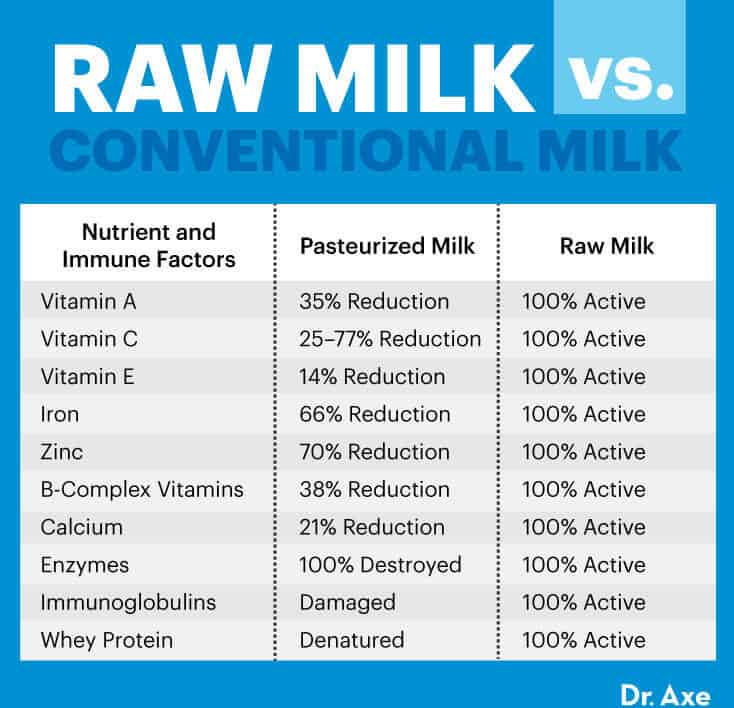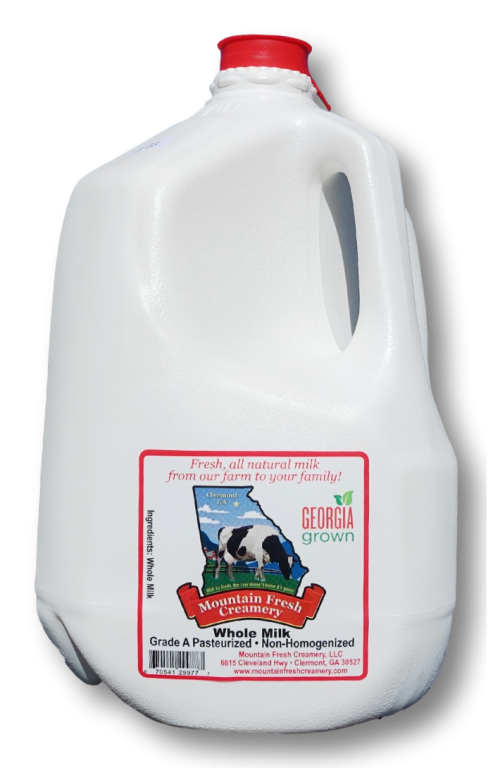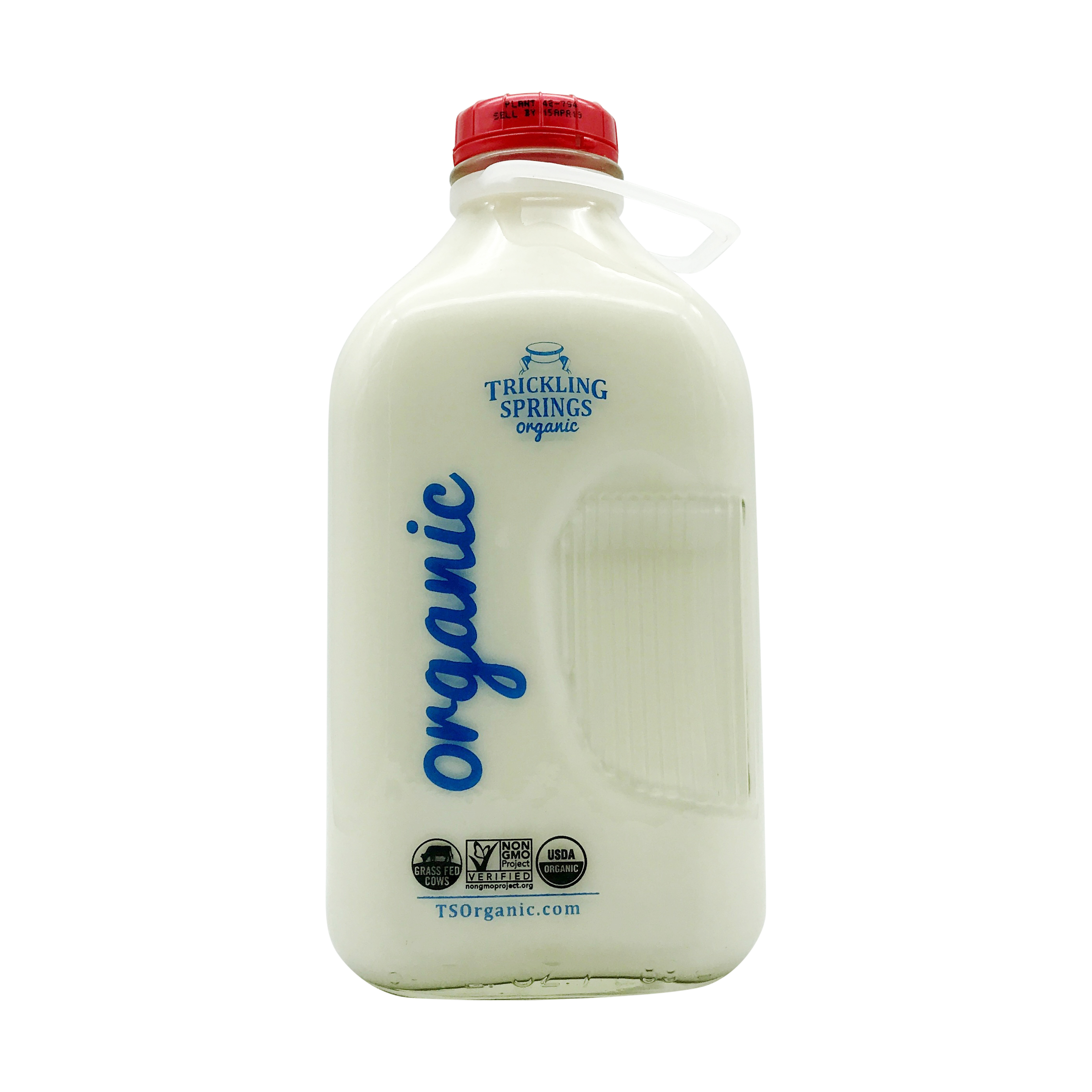Setting aside nut and dairy-free alternatives for a moment, let's talk about real cow's milk. Raw milk has been part of the resurgence of interest in returning to the roots of nutrition and embracing foods in their natural state.
In this post, we'll dive into the advantages of raw milk, the drawbacks of pasteurization, why skim milk falls short, and the importance of sourcing milk from healthy, well-treated cows.
The Power of Raw Milk:
Raw milk is a nutritional powerhouse, with essential vitamins, minerals, enzymes, and beneficial bacteria. Unlike its pasteurized counterpart, raw milk retains its natural goodness, offering a plethora of health benefits. Rich in vitamins A, D, and B12, as well as calcium, magnesium, and phosphorus. It promotes gut health and immunity because it has all of the live enzymes present that aid in digestion and enhance nutrient absorption. It contains butyric acid, higher levels of conjugated linoleic acid, omega-3, vitamin B2, and may help eradicate H. pylori infection.
The Pitfalls of Pasteurization:
While pasteurization was introduced with the intention of ensuring food safety, it comes at a cost. The process of heating milk to high temperatures destroys not only harmful pathogens but also delicate nutrients and enzymes. Vitamins such as B vitamins and vitamin C are significantly diminished during pasteurization, along with beneficial enzymes that facilitate digestion and nutrient utilization. Pasteurization also alters the structure of proteins and fats, rendering them less bioavailable and potentially less beneficial to the body.

Why Skim Milk Falls Short:
In the quest for low-fat options, skim milk has gained popularity. However, stripping milk of its natural fats also removes essential nutrients and compromises its nutritional integrity. Vitamins A and D, which are fat-soluble, are significantly reduced in skim milk compared to whole milk. Furthermore, the absence of fats diminishes satiety, leading to potential overconsumption of carbohydrates and a less balanced diet overall.
Accessing Raw Milk:
Raw milk isn't available in grocery stores in most states due to legal restrictions but it can be purchased directly from farms or at farmers' markets. Laws regarding the sale of raw milk vary from state to state, so it's essential to check local regulations to determine the availability in your area. Some states permit the sale of raw milk for human consumption but restrict it to on-farm sales or licensed retail establishments. Alternatively, there are several reputable whole milk brands available in stores that prioritize the well-being of their cows and the quality of their products.
Alternatives to Raw Milk:
For those unable to access raw milk, alternative options exist. There are some health-conscious dairy brands that offer minimally processed whole milk from 100% grass-fed cows to preserve nutrients while meeting pasteurization standards. When considering milk options, prioritizing whole milk is key. Whole milk maintains a rich nutrient profile, including essential fats crucial for hormone production, brain function, and cellular health. It is not as rich as raw milk but is definitely a better option.
The environment in which cows are raised greatly impacts milk quality. Milk from healthy, pasture-raised cows is naturally nutrient-rich and devoid of harmful contaminants. Conversely, milk from sick or factory-farmed cows may contain antibiotics, hormones, and other undesirable substances, requiring pasteurization for safety.
Particularly beneficial for those with allergies or digestive issues, goat's milk is another nutritious alternative. You would apply the same to goat milk as cow, Raw is best and then go through same pasteurization process.
Choosing Quality Whole Milk Brands:
When selecting whole milk from the grocery store, opt for brands that prioritize the health and welfare of their cows. Look for certifications such as "100% grass-fed," "pasture-raised," or "organic," indicating that the cows are raised in humane conditions and fed a natural diet. Additionally, consider choosing brands that use low-temperature pasteurization methods to preserve the milk's nutritional integrity as much as possible.
What Are the Best Milks To Buy at the Store:
Best Option: Raw Milk
Raw Farm
Better Option: Low-Temperature Pasteurization
This method involves heating milk to 145ºF for 30 minutes, preserving most of the beneficial enzymes but still causing a slight denaturing of milk proteins.
Alexandre Family Farm

Kalona Super Natural

Mountain Fresh Creamery

Mill King Market & Creamery

Not the Worst: High-Temperature Pasteurization
HTST and HHST pasteurization involve heating milk to higher temperatures for shorter durations 160 – 170 degrees Fahrenheit for 15 minutes, resulting in significant protein denaturation and loss of natural enzymes and healthy bacteria found in raw milk.
Straus Organic

Tickling Spring

Zeal Creamery

The Worst Option: Ultra-High Temperature Pasteurization (UHT)
UHT pasteurization subjects milk to extremely high temperatures for a short time, resulting in a longer shelf life but also altering the molecular structure of milk and potentially causing immune responses. UHT milk often has a "burnt" or "cooked" taste and may lack nutritional value.
If I had to buy UHT the only two brands I would pick are:
Maple Hill
Organic Valley



